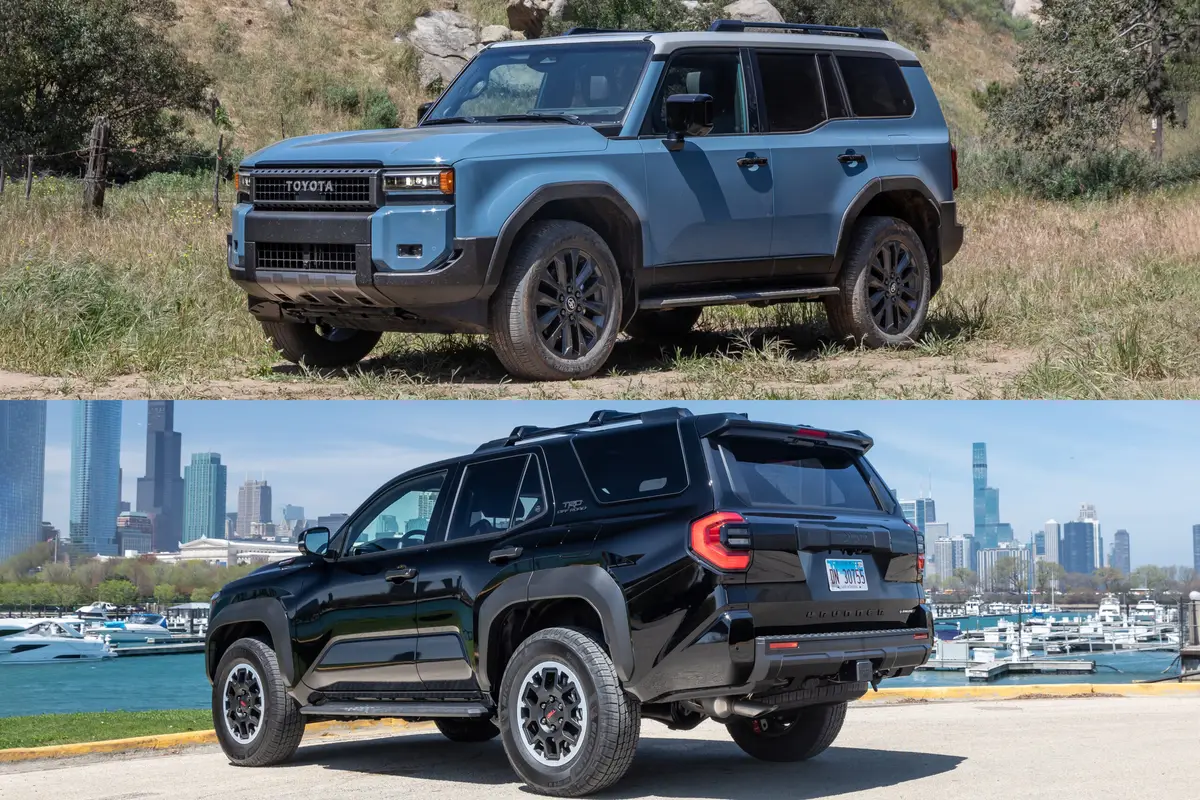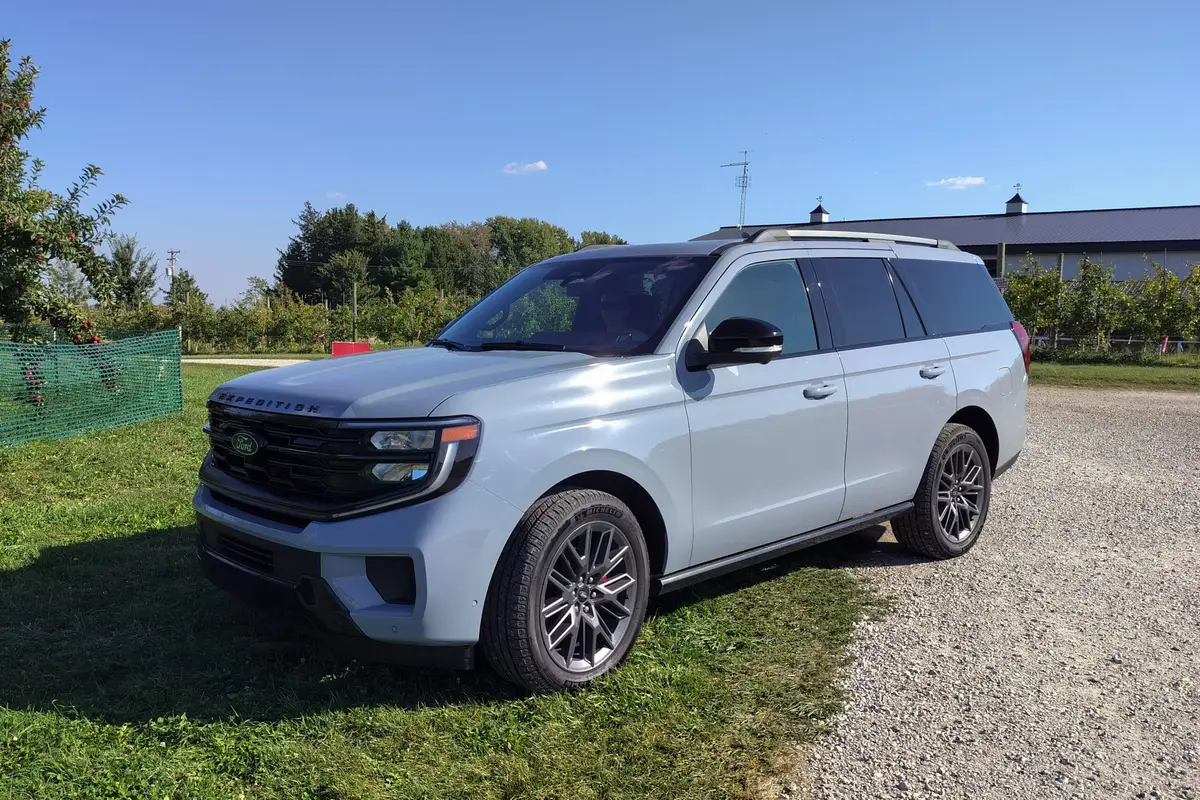What Is a Jeep Jamboree?

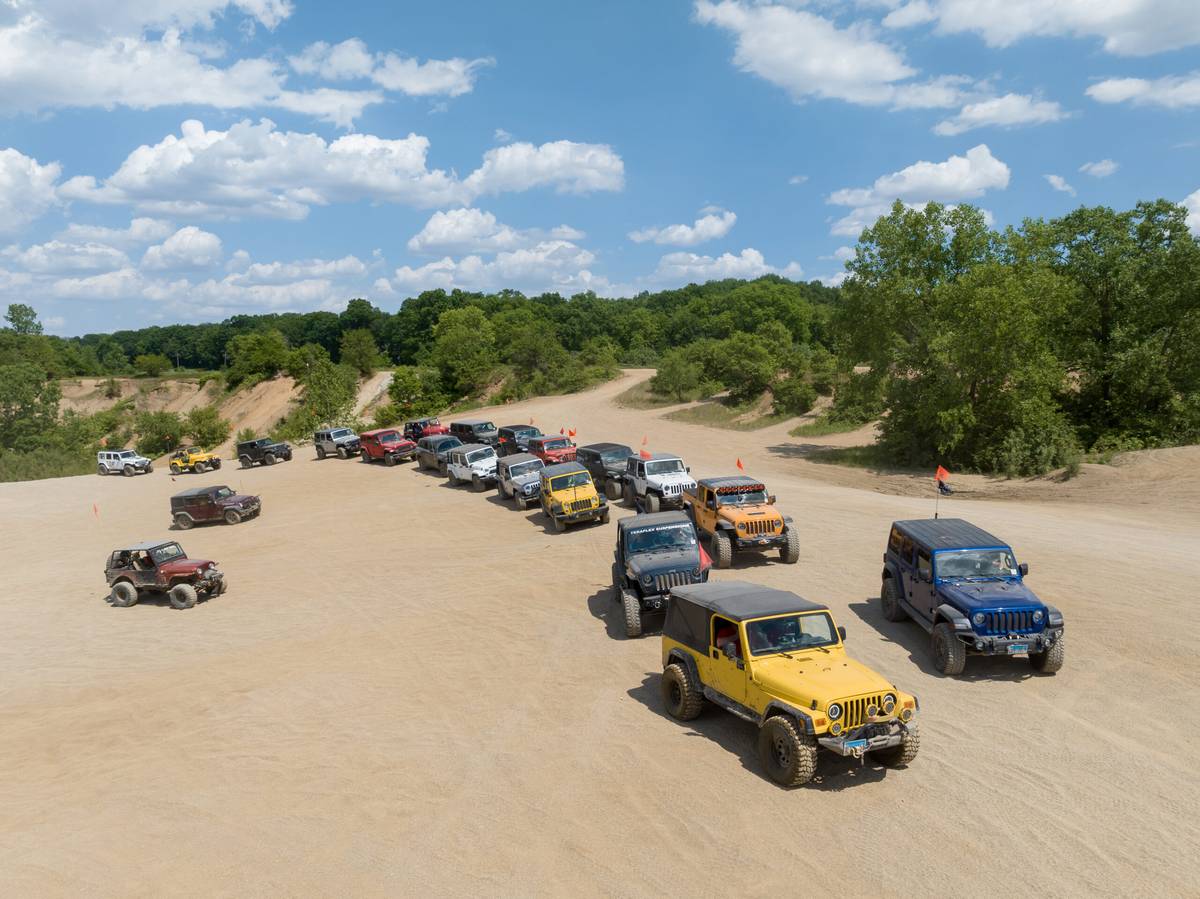
There are many reasons we at Cars.com purchased a 2023 Jeep Grand Cherokee 4xe Trailhawk for our long-term test-vehicle fleet. In addition to the Grand Cherokee being our Best SUV of 2023, there’s just so much to test on this fully equipped vehicle and so many questions to answer. What kind of real-world economy and driving range will we get from the plug-in hybrid powertrain? How do the fancy Amazon Fire TV rear-seat entertainment and night vision camera systems work? What kind of off-roading capabilities do the enhancements of the rugged Trailhawk trim level add?
Related: Why Did We Buy a 2023 Jeep Grand Cherokee 4xe?
To answer that last question, we recently took our Trailhawk (along with a 2023 Jeep Wrangler 4xe Rubicon) to a Jeep Jamboree event at the Badlands Off Road Park in Attica, Ind. We’ll detail how both the Grand Cherokee and Wrangler fared there in separate articles, but we also wanted to answer two more questions: What is a Jeep Jamboree, and what’s it like to attend your first one?
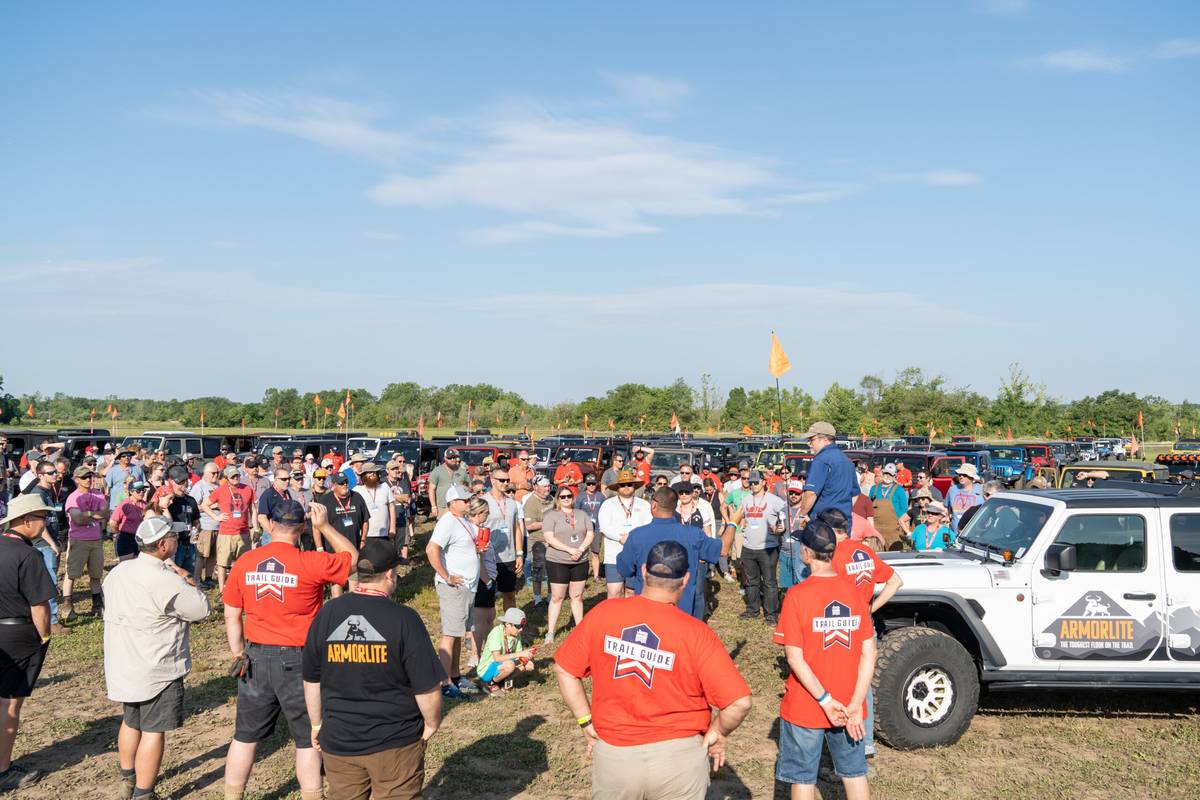
What Is a Jeep Jamboree?
Simply put, the Jeep Jamboree is a series of off-road events specifically for Jeep-brand vehicles, held at off-road venues all around the country. For the vast majority of Jamborees, any Jeep vehicle with a 4-Low four-wheel-drive transfer case is eligible to participate, with driver experience levels ranging from “none” to “expert.” Save for the more involved Moab or Rubicon Trail events, almost all Jeep Jamborees are set up to offer two full days of off-roading: Arrive and register on a Wednesday or Thursday afternoon, hit the trails for the next two days, and head back home that evening or the morning after.
The trail days typically begin with breakfast, followed by a mandatory general attendance meeting to discuss the plans for the day, safety and more. A full day of off-roading follows (usually with a midday lunch break on the trail), capped off with a family-style dinner. We counted more than 40 events nationwide on the 2023 schedule at JeepJamboreeUSA.com, so chances are there’s a Jamboree within reasonable driving distance from your home.
Related Video:
What Does It Cost?
Registration fees vary depending on the event, and all fees must be paid in advance. Our Badlands event was a Select event that included a family-style dinner on both trail-day evenings; Classic events include all meals (including a hot breakfast), and there are also specialized Signature events and full overlanding-style Adventure trips, as well.
The fees for the Badlands event we attended were $325 per adult and $95 per child from 10-15 years old (children 9 or under are free). On most Jamborees, there’s also a Family Plan option that covers two adults (no more, no less) and two or more children under 16; the Family Plan for our Badlands event was $750. Most of the Select and Classic Jamborees are in this pricing ballpark; fees for the longer, advanced-level Moab and Rubicon trips are typically $1,995 for the driver and $425 for each additional passenger, and those events are restricted to later-model Wranglers or Gladiators. Lodging (either hotel room or campsite), fuel costs (you’ll definitely want to start each day with a full tank, because it’s really inconvenient and embarrassing to run out of gas on the trail) and other incidental expenses are on you, as well.
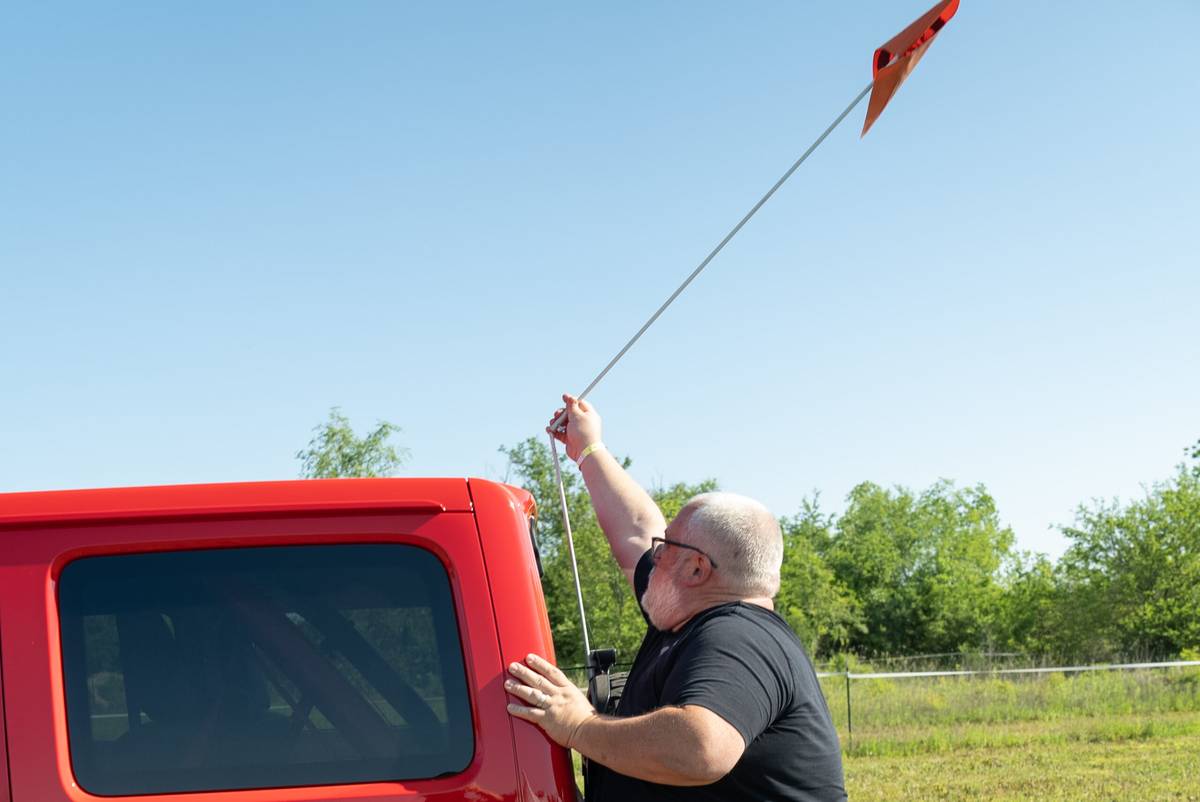
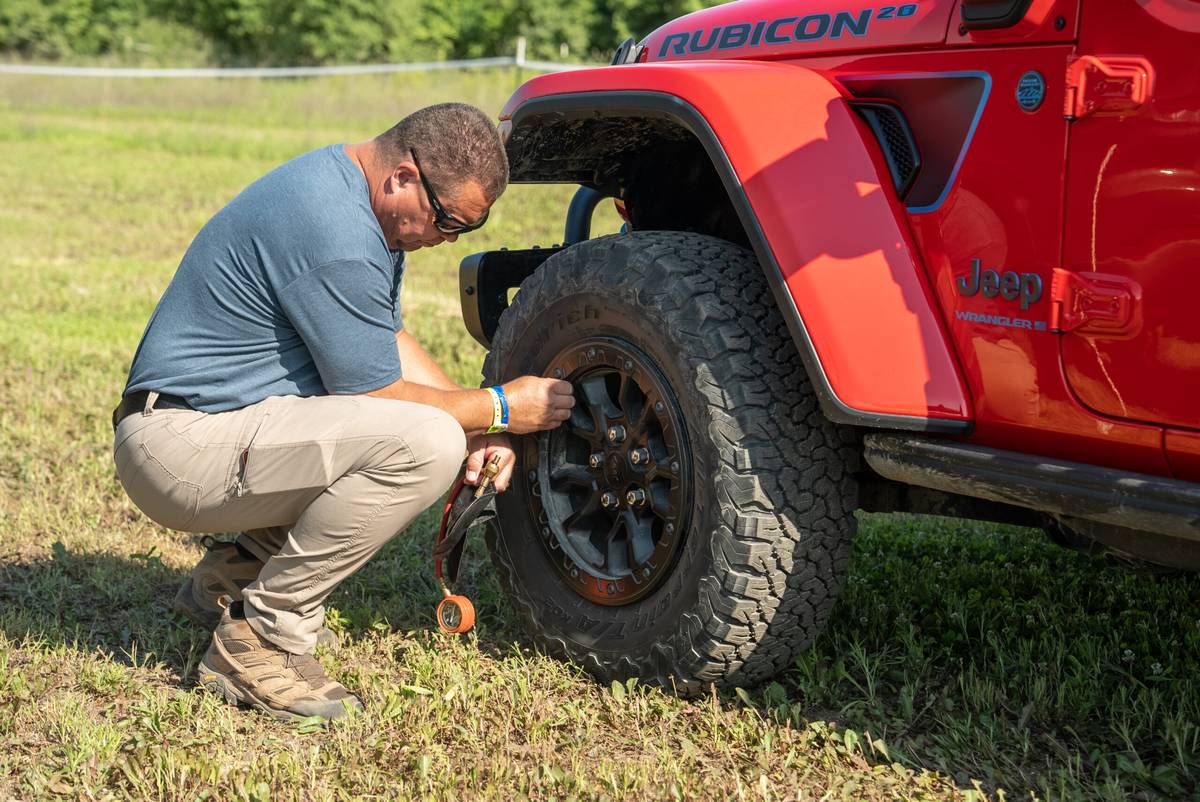
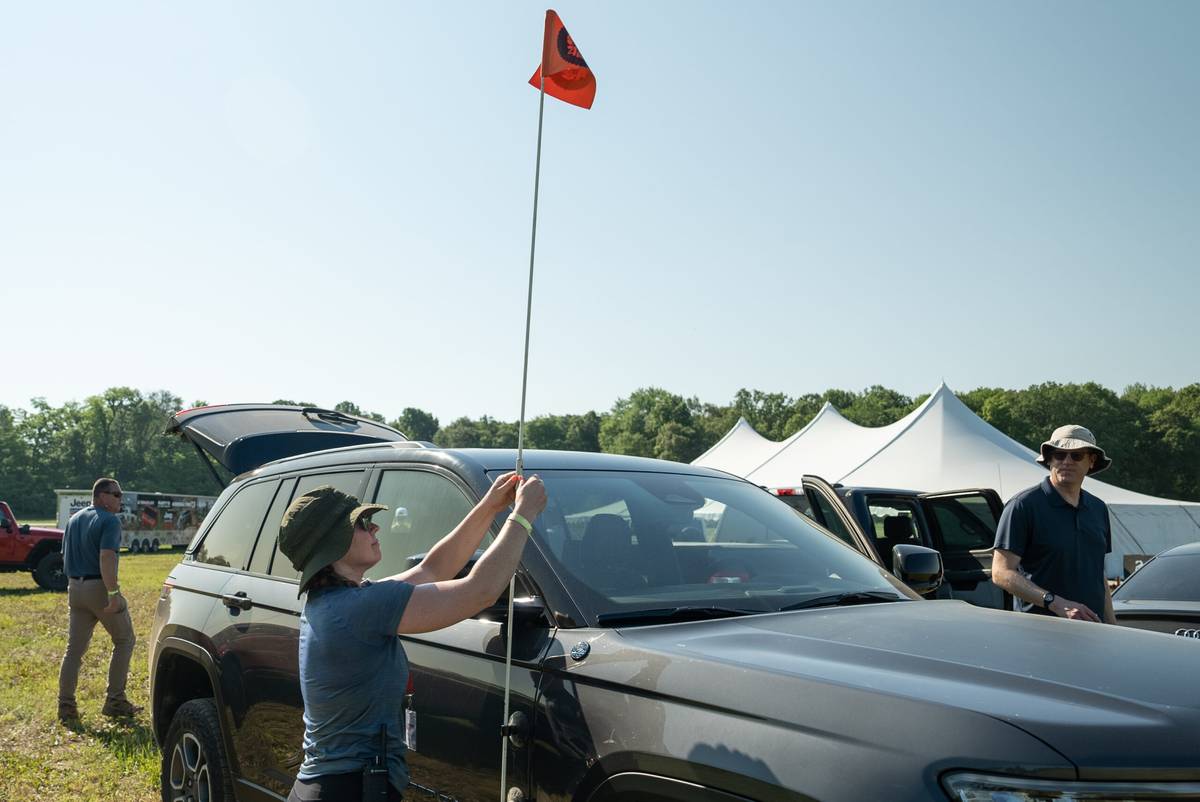
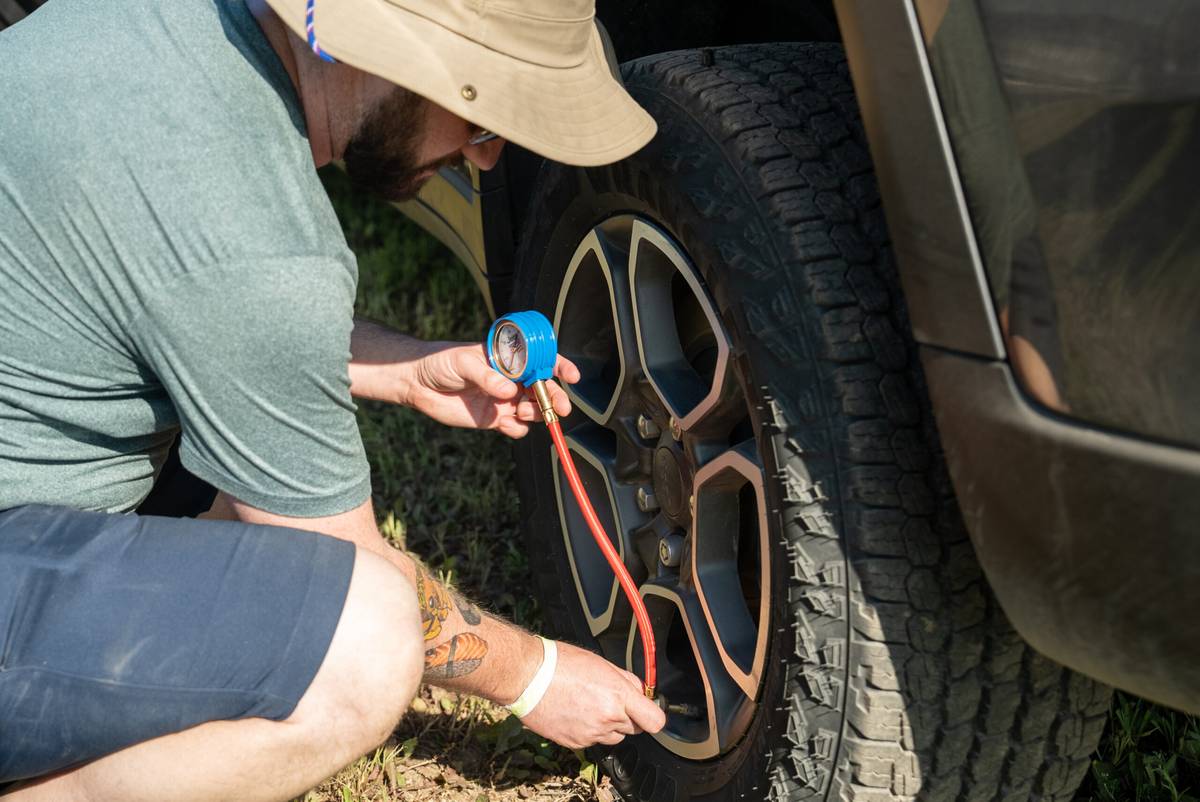




What You’ll Need
In addition to your Jeep itself, you’ll need to have an orange safety flag that extends at least 2 feet above the highest point on your vehicle, a full-size spare tire, tow points on your vehicle in case you get stuck (no problem on most late-model off-road-focused Jeeps, which come with two front tow hooks and a single rear tow hook from the factory) and a general mobile radio service (GMRS) radio for communicating with your trail guides and the rest of your run group when you’re out on the trails.
Strongly recommended items include tow straps, a basic tool kit and a first aid kit, along with common outdoor-adventuring staples such as a flashlight, insect repellent, sunblock, snacks, zip-close bags, toilet paper, and a cooler with ice and nonalcoholic beverages (staying hydrated is important, but alcohol is expressly prohibited on the trails). You should also bring along a couple of good tire pressure gauges, a tire deflator kit and an air compressor. To optimize your Jeep’s off-road traction, you’ll be deflating your tires to at least 10 pounds below the manufacturer-recommended air pressure for on-road driving, and this gear makes the deflation/reinflation process a lot quicker and easier.
Our Jamboree Experience
I’ll admit that I had a sinking feeling that I had brought a knife to a gunfight when I pulled into the registration area of the Badlands Jamboree event (an open grass field with a large big-top-style tent at its center) and discovered that I was driving the only Grand Cherokee in attendance. Almost everyone else was in a Wrangler or CJ, with a handful of Gladiators and beefed-up vintage Cherokees thrown in — and some of these were seriously modified with lifted suspensions, oversized off-road tires and cut-down bodywork. Compared to these hardcore, purpose-built machines, the luxurious Grand Cherokee 4xe looked more than a little out of place.
The atmosphere couldn’t have been more welcoming, however. There are veterans and at least a few newbies on every Jeep Jamboree, and it’s clear the typical participant is a hearty, hardy person. The check-in and vehicle evaluation line can be lengthy since attendees have to fill out forms and each Jeep must undergo a general evaluation and safety inspection, but it was easy to strike up conversations and meet other Jeepers during the process.
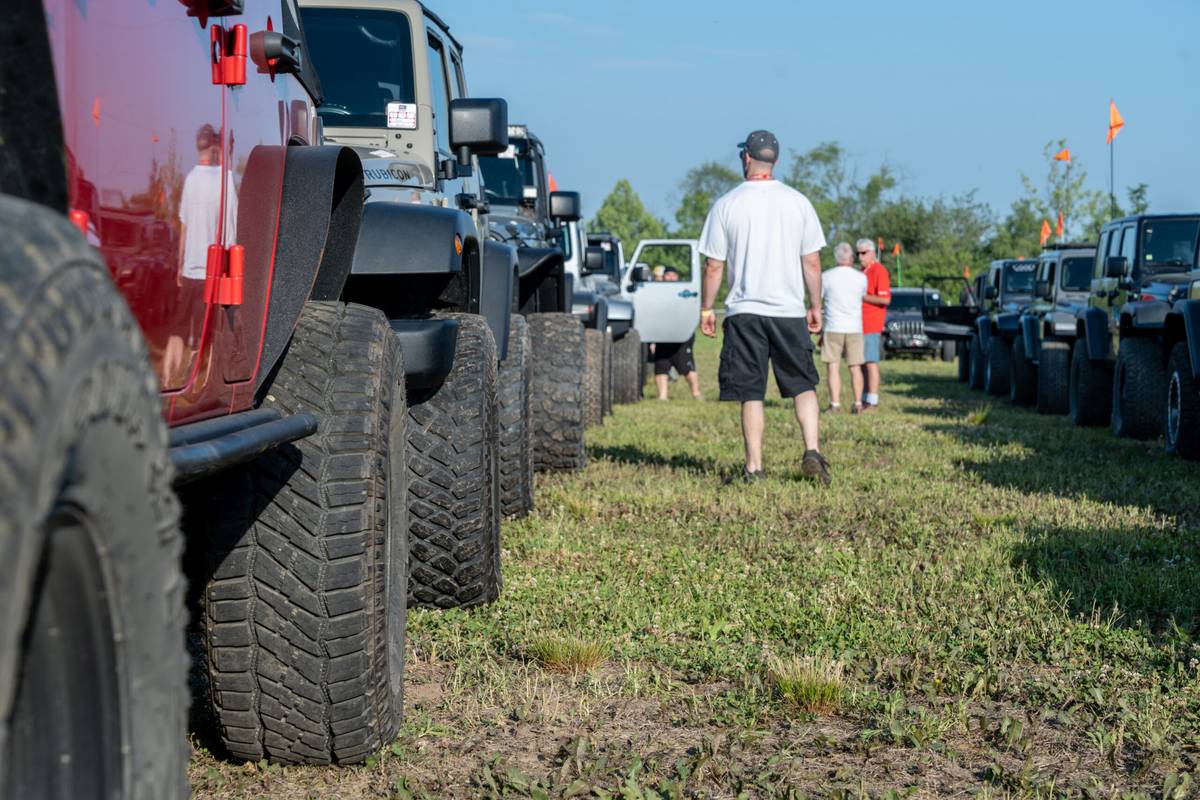
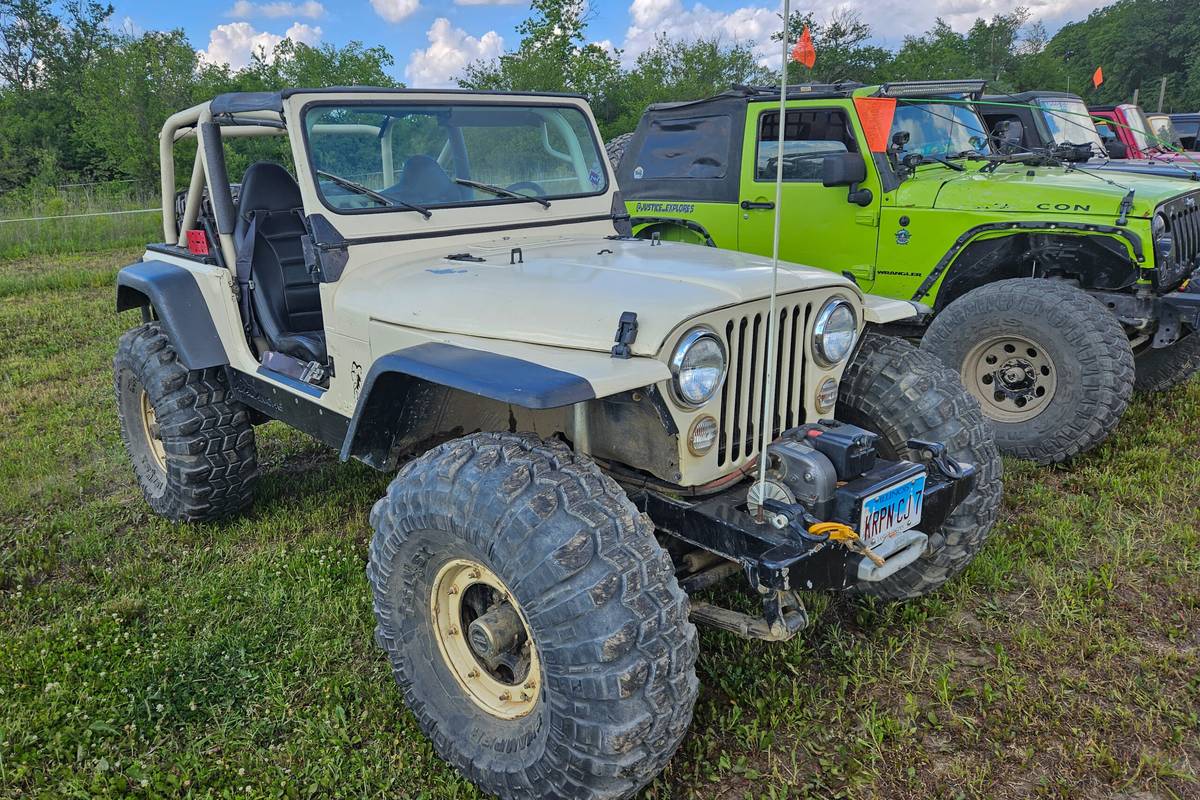
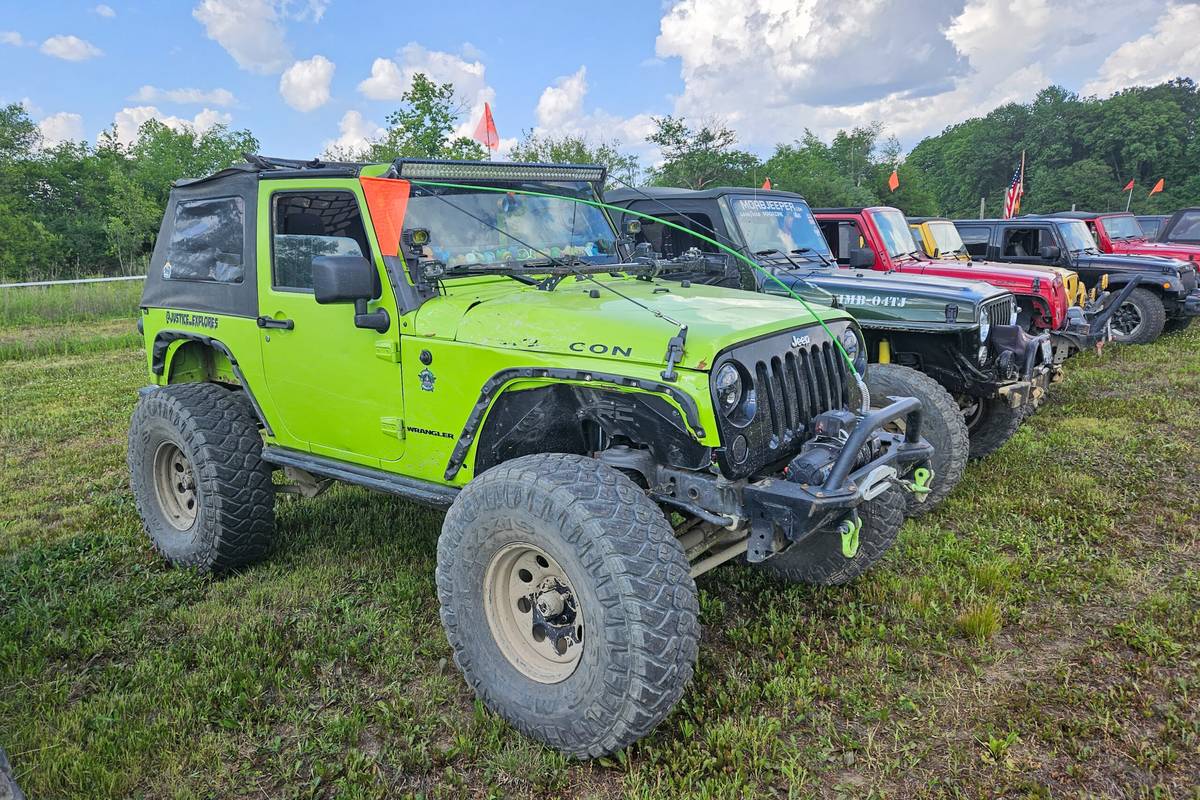
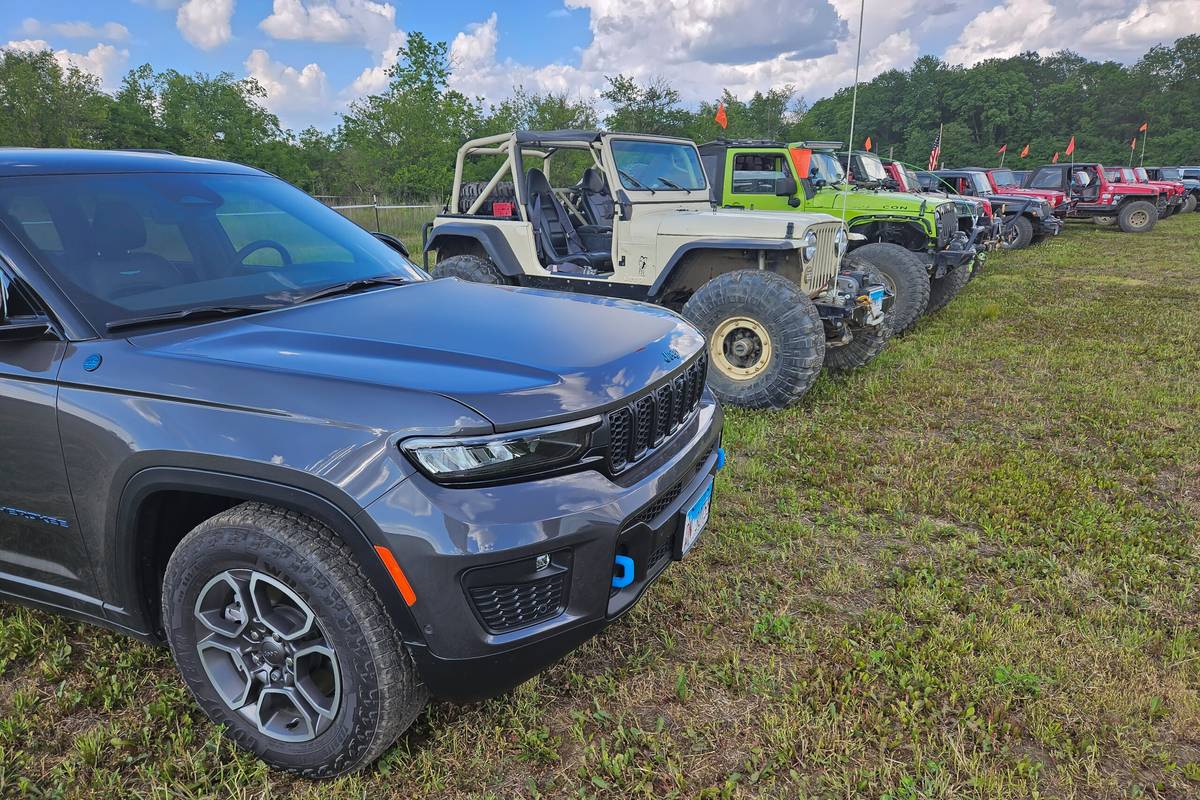




Several parameters determine the group you’ll run with on the trails. The Badlands Jamboree had seven groups that were determined by trail difficulty, driver experience, tire size and type, and the presence of a winch and locking differentials (no winch or locking diff was fine for the entry-level group; the top two groups required a winch and both front and rear locking differentials). Both I and my fellow Jamboree driver, Cars.com Detroit Bureau Chief Aaron Bragman, have done our share of off-road driving (especially Aaron, who owns a late-model Wrangler). However, since both of our Jeeps were factory stock and neither of us had participated in a Jamboree before, we elected to join the entry-level Black run group. The group numbered around 10 Jeeps and its official nickname was the Pirates, which naturally led to many “Arrrrr!” exclamations and punny pirate jokes on our GMRS channel throughout the day.
After the mandatory morning meeting, we set off in single file on the seemingly endless trails of the park, with our trail guide in his modified Jeep at the front of the pack. We were instructed to keep the Jeep in front of us and the one behind us in sight at all times — staying together as a group is important when navigating labyrinthine trails. The Badlands Off Road Park is a massive 1,400-plus acres, and the variety of off-road terrain and obstacles it offers is incredibly vast — almost improbably so. There are sand dunes, forested areas, streams for fording, several types of gravel (part of the park was previously a quarry), loose- and solid-rock trails, and lots of good ol’ dirt and mud. Even though we were just on the outskirts of town, it felt like we were completely off the beaten path and fully immersed in nature.
For significant obstacles, Jamboree staffers stand outside to serve as spotters. This is common in off-roading — even highly experienced drivers use spotters when traversing particularly tough or tricky terrain. There’s no substitute for a pair of eyes outside the vehicle to guide the driver, even with the surround-view camera systems our Jeeps were equipped with. The spotters use both hand signals and verbal instructions to guide you; to avoid confusion, they say “driver” and “passenger” instead of “left” and “right” when telling you which direction to turn your steering wheel.
This should go without saying, but we’ll say it anyway: Your Jeep is going to get really dirty when you drive it off-road all day. It was very hot and very dusty for both days of our event, and while our Jeeps’ air conditioning (and the Grand Cherokee’s ventilated seats) provided welcome respite from the heat, it seemed counter to the spirit of things to have our windows up all the time. Our interiors ended up coated in a layer of dust and grit that’ll take more time and effort to remove than a simple hose-down at a coin-op car wash — something to consider if your Jeep is your daily driver.
More From Cars.com:
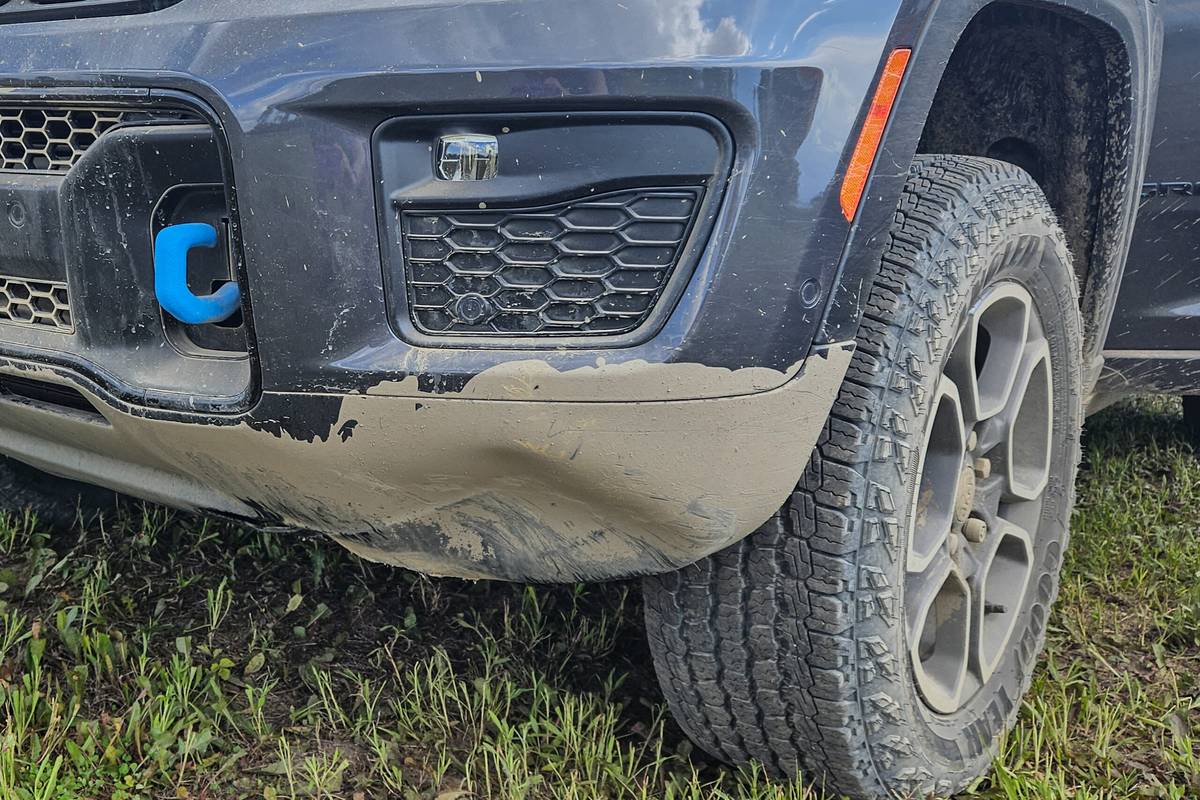

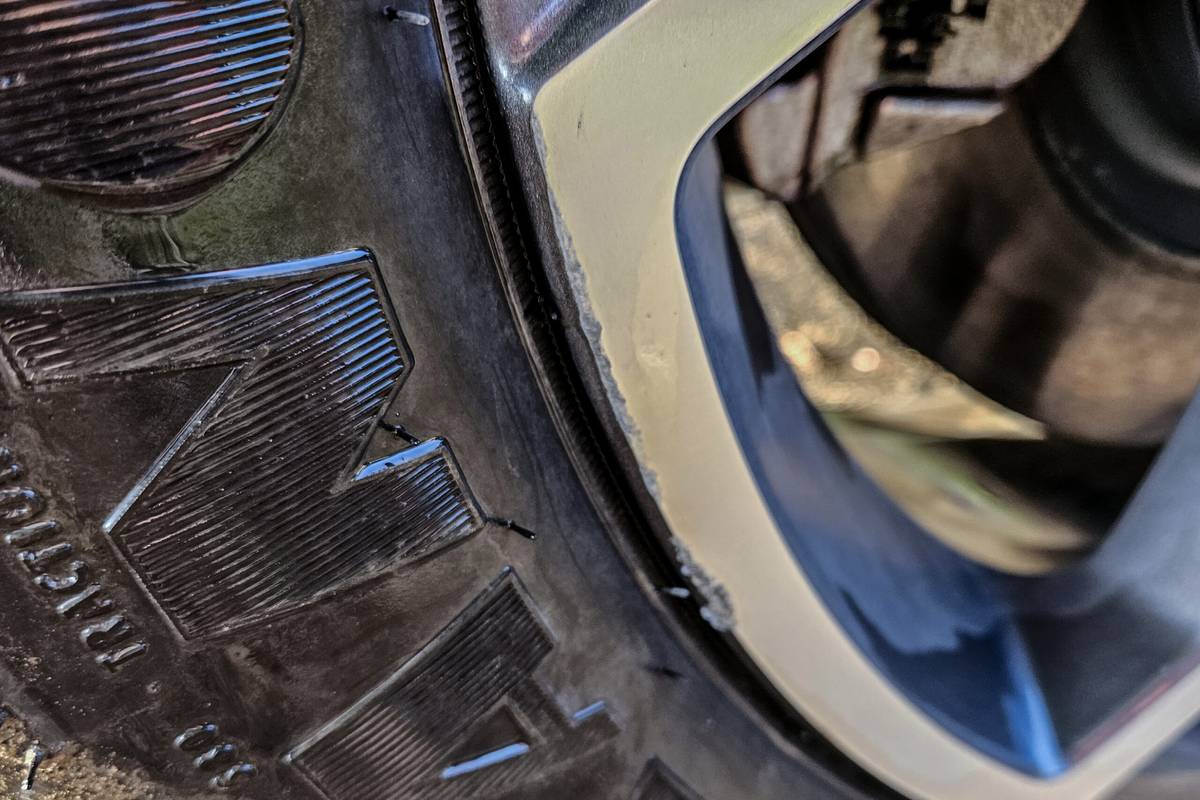
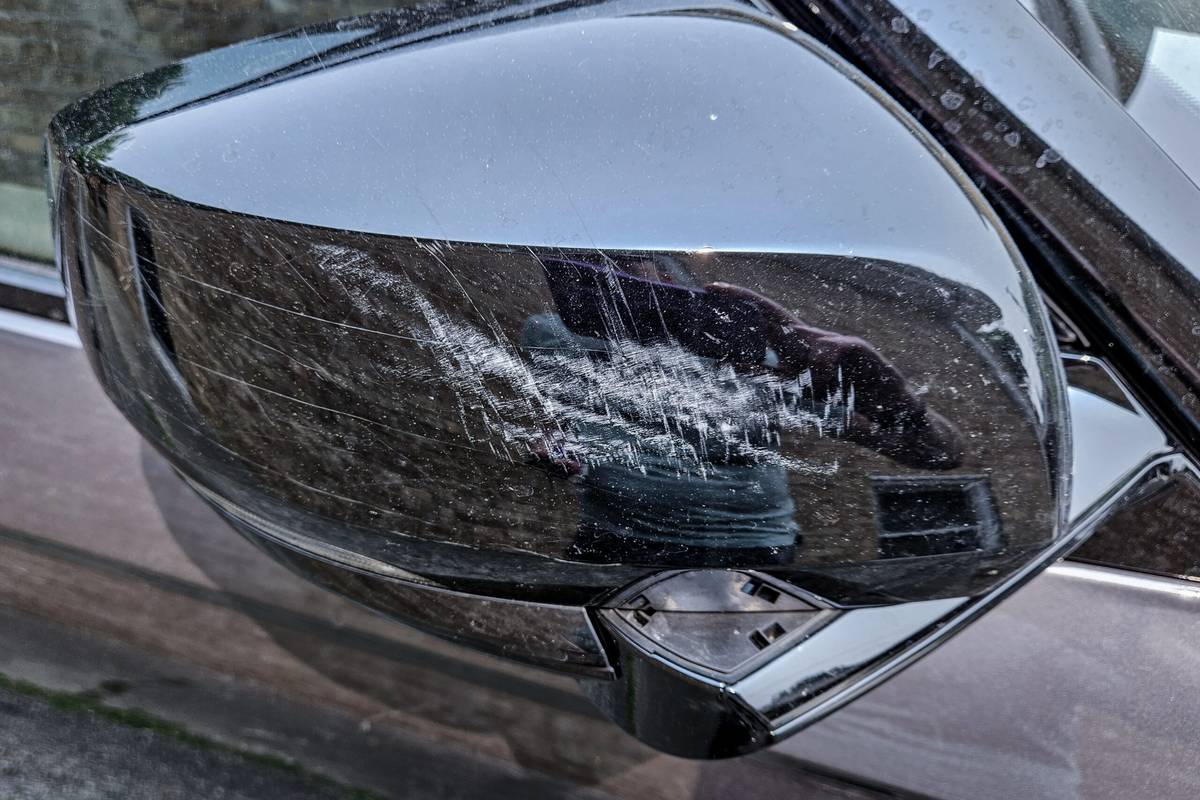

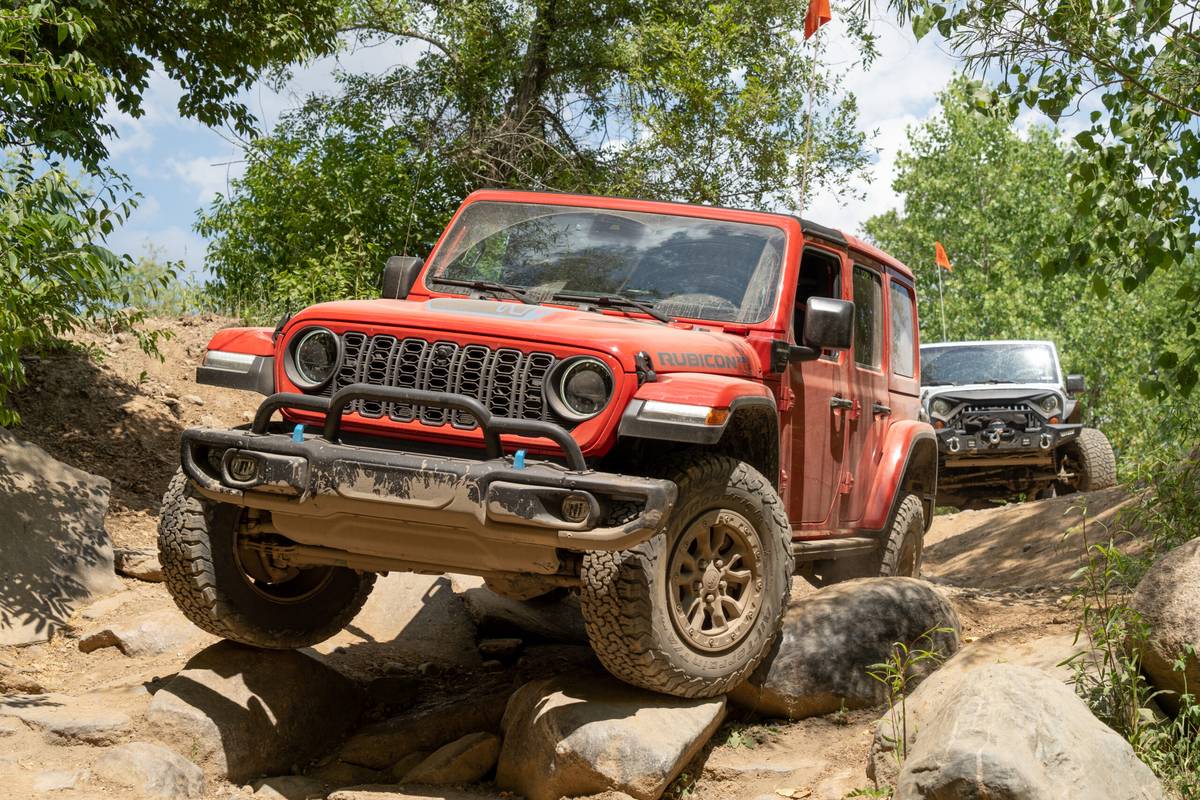
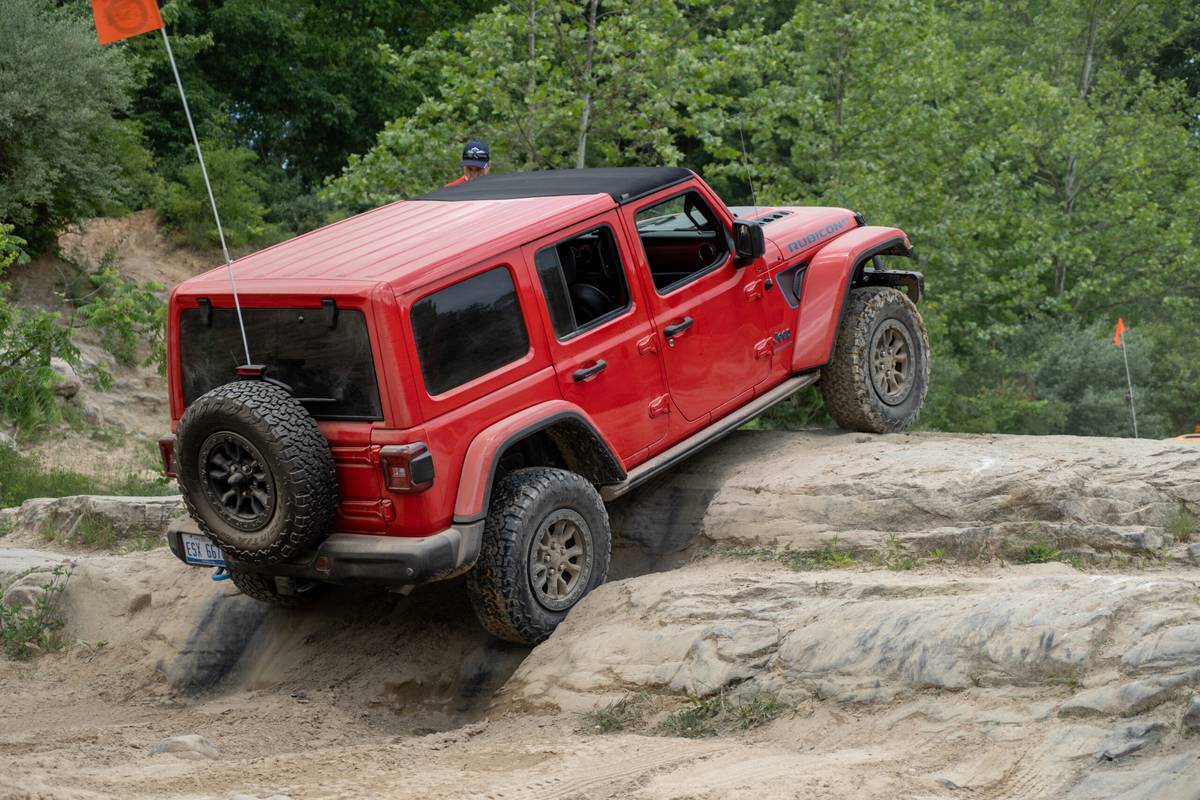







The Damage Done
Along the same lines, if you’re planning to take your Jeep on real off-road trails at a Jeep Jamboree event (or anywhere else), know that bumps and scratches often come with the territory and you’re likely to pick up at least a few “battle scars” along the way. Underbody skid plates can get slammed and scraped (that’s what they’re there for), wheel rims can get scuffed, and body panels can get scratched and dented. All of this happened to our Grand Cherokee; brushing past tree branches added some minor paint scratches along the body sides, bumping against rocks caused a couple of deep scuffs on the rims of our 18-inch machine-faced aluminum wheels, and we somehow scuffed the housing of the passenger-side rearview mirror (neither Aaron nor I remember this happening when we were driving). The biggest boo-boo we incurred was a dent and a torn-out access panel on the lower driver’s side of our front bumper. Our press-fleet Wrangler Rubicon fared better due in part to its smaller exterior size and more generous approach and departure angles, but it picked up a few scratches and dings, as well. Aaron and I were careful behind the wheel of both vehicles, but we also didn’t shy away from challenging them on the trails to see what they were capable of.
All of our Grand Cherokee’s bumps and bruises are essentially cosmetic damage, but they obviously detract from that showroom-fresh feeling. We’re hoping that our paint scuffs and scratches can be rubbed out (we might even try doing it ourselves), and we’ll also look into the costs of fixing the wheel rim damage and replacing the dented front bumper. Based on the seam line on the front fascia, we’re hoping that only the lower front bumper — the slim part below the grilles and tow hook recesses — will need to be replaced.
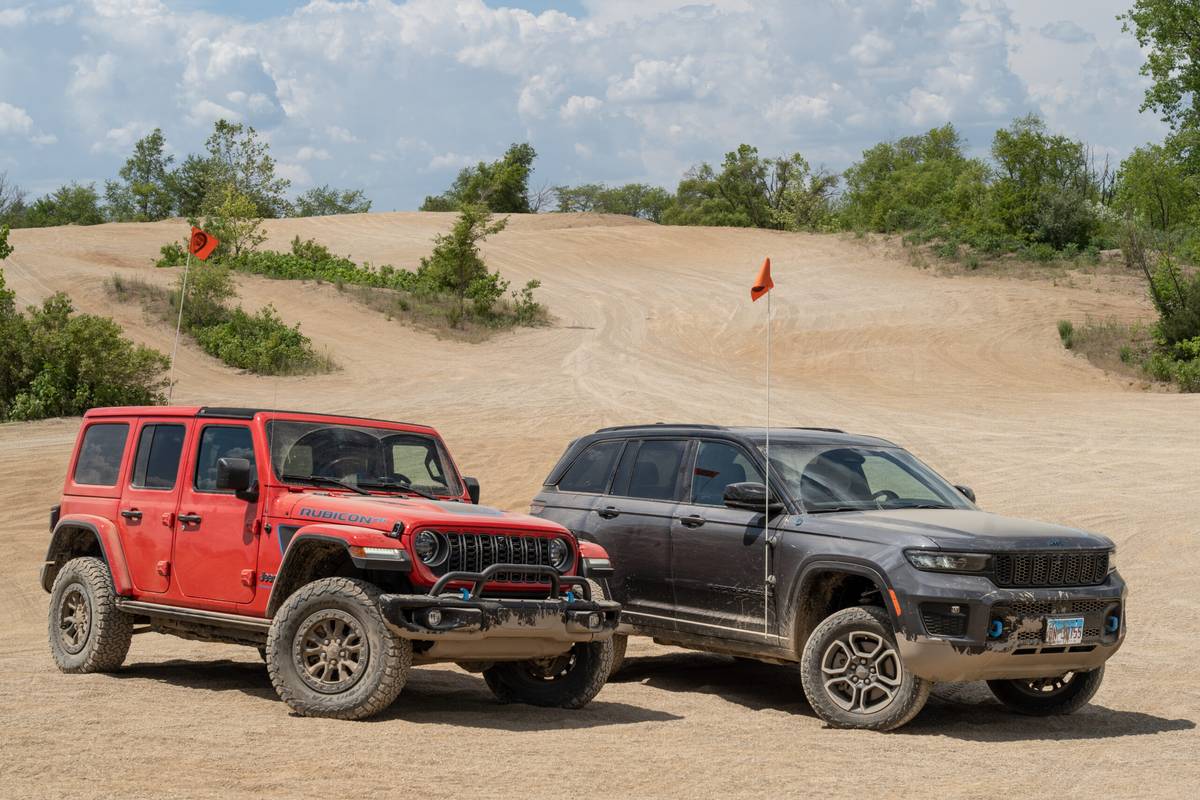
Is a Jeep Jamboree Worth It?
Clean-up and minor repairs aside, if the above sounds like great fun to you, then yes, absolutely. Simply getting access to primo off-road terrain (with things like permits and land-use fees taken care of for you) is a big plus. And if you add up what two full days of activities would cost at, say, a typical amusement park, it becomes clear a Jeep Jamboree is a decent value. You’ll likely be surprised, even amazed, at what your Jeep is capable of doing off-road, and you’re almost certain to make new friends in the process. Over the course of the event, we asked several participants and staffers what their favorite part of a Jeep Jamboree was. The answer was always the same, and it was given with no hesitation: “The people.”
Cars.com’s Editorial department is your source for automotive news and reviews. In line with Cars.com’s long-standing ethics policy, editors and reviewers don’t accept gifts or free trips from automakers. The Editorial department is independent of Cars.com’s advertising, sales and sponsored content departments.

Senior Research Editor Damon Bell has more than 25 years of experience in the automotive industry, beginning as an Engineering Graphics researcher/proofreader at model-car manufacturer Revell-Monogram. From there, he moved on to various roles at Collectible Automobile magazine and Consumer Guide Automotive before joining Cars.com in August 2022. He served as president of the Midwest Automotive Media Association in 2019 and 2020.
Featured stories
